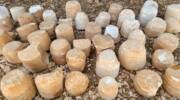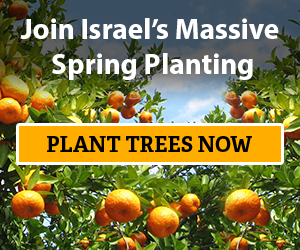Cutting-edge modern technology will assist in solving a decades-old puzzle involving the famous millennia-old Dead Sea Scroll documents.
Computer scientists and Dead Sea Scrolls scholars are building a digital work environment for one of the most important discoveries of the 20th century. This will enable the virtual joining of the “puzzle pieces” of thousands of ancient scroll fragments found in Judean Desert caves.
The project is a German-Israeli research collaboration of the Göttingen Academy of Sciences and Humanities, the Israel Antiquities Authority (IAA), Haifa University and Tel Aviv University.
The $1,765,000 project is being funded by the Deutsch-Israelische-Projektförderung (DIP), and administrated by the Deutsche Forschungsgemeinschaft (DFG).
The conservation laboratory of the Israel Antiquities New Digitized Program Will Help Solve Dead Sea Scrolls Puzzle Authority in Jerusalem is dedicated to tending to thousands of approximately 2000-year-old scrolls fragments. Almost 70 years since the initial discovery, ongoing technological developments now allow ever more innovative analyses and insights into these ancient manuscripts.
The project will develop tools that will enable the creation and publication of a new generation of critical digital editions of the Dead Sea Scrolls—rich in information and updatable.
The dynamic research environment for studying the Dead Sea Scrolls will be achieved by linking the robust databases and resources of the project: the Qumran-Lexicon-project of the Göttingen Academy of Sciences and Humanities and the Leon Levy Dead Sea Scrolls Digital Library of the IAA.
The main outcomes of the project will be an enhanced, hands-on virtual workspace that will allow scholars around the world to work together simultaneously, as well as a new platform for collaborative production and publication of Dead Sea Scrolls editions.

The Psalms Scroll containing Psalm 133 which features the verse: “How good and how pleasant for brethren to dwell together.” (Shai Halevi/IAA)
During the 1950s and early 1960s, thousands of scrolls fragments were discovered, some of which were only tiny pieces. Since then, many researchers have been working on joining fragments to one another. Now, as part of the project, advanced digital tools will be developed for suggesting new joins. These tools will help researchers to identify connections between various fragments and manuscripts.
The environment will also offer palaeographic tools and an alignment tool connecting text and image that will enable simple transitions between the databases: readers will be able to access the original text of the scroll, up-to-date translations, high-resolution images, dictionary entries and parallel texts.
By: JNI.Media
Do You Love Israel? Make a Donation - Show Your Support!
Donate to vital charities that help protect Israeli citizens and inspire millions around the world to support Israel too!
Now more than ever, Israel needs your help to fight and win the war -- including on the battlefield of public opinion.
Antisemitism, anti-Israel bias and boycotts are out of control. Israel's enemies are inciting terror and violence against innocent Israelis and Jews around the world. Help us fight back!






















